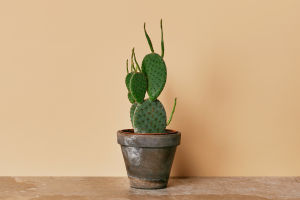Hey Lykkers! If looking to add some green to home or office space without the hassle of extensive maintenance, succulent plants might be the perfect choice.
!ith their diverse shapes, colors, and textures, succulents have become increasingly popular as decorative houseplants.
Let's explore the unique characteristics of succulents, their care requirements, and the benefits of incorporating them into living spaces.
What Are Succulent Plants?
Succulents are a group of plants characterized by their thick, fleshy parts, usually their leaves and stems, which store water. This adaptation allows them to thrive in arid environments and periods of drought. They come in a wide range of species, each exhibiting different shapes and colors, from the classic rosette forms of Echeveria to the tall, sculptural designs of Aloe vera.
Easy Indoor Succulents (& How to Keep Them Alive!)
Video by Mountain Crest Gardens
The Appeal of Succulent Plants
One of the primary reasons succulent plants have surged in popularity is their aesthetic appeal. Whether prefer a single statement piece or a full succulent garden, these plants can fit seamlessly into various interior styles, from modern minimalism to rustic charm. Additionally, their ability to thrive in small containers makes them perfect for apartment dwellers or anyone looking to bring a bit of nature indoors.
Care Tips for Succulent Plants
Caring for succulents is relatively simple, making them an ideal choice for both novice and experienced gardeners. Here are some essential care tips to keep your succulents healthy:
1. Light Requirements: Most succulents thrive in bright, indirect sunlight. Place them near a south- or west-facing window where they can receive plenty of light. If you notice your succulent stretching or leaning, it may need more light.
2. Watering: One of the most critical aspects of succulent care is watering. Succulents prefer to dry out completely between watering sessions. During the growing season spring and summer, water them every 1-2 weeks. In the fall and winter, reduce watering to once every 3-4 weeks.
3. Soil: Use a well-draining soil mix specifically designed for succulents and cacti. This helps prevent root rot, which can occur if the plant sits in waterlogged soil.
4. Fertilizing: While succulents do not require much fertilizer, feeding them with a diluted, balanced fertilizer during the growing season can promote healthy growth. Avoid fertilizing in the fall and winter when the plant is dormant.
5. Potting and Repotting: Succulents should be potted in containers with drainage holes to allow excess water to escape. Repot them every couple of years to refresh the soil and provide room for growth.
The Benefits of Succulent Plants
In addition to their aesthetic appeal, succulents offer several benefits:
1. Air Quality Improvement: Like other plants, succulents can help improve indoor air quality by absorbing carbon dioxide and releasing oxygen, creating a fresher environment.
2. Stress Relief: Research shows that having plants in your space can reduce stress levels and promote a sense of calm. The vibrant colors and shapes of succulents can enhance mood and improve overall well-being.
3. Easy to Propagate: Succulents are incredibly easy to propagate. Most varieties can be multiplied through leaf cuttings or offsets, making it easy to expand your collection or share with friends.
4. Low Maintenance: As mentioned earlier, succulents require minimal care compared to other houseplants. This makes them perfect for busy individuals or those who may not have a green thumb.
Succulent plants are not just beautiful additions to any home, they are also low-maintenance, beneficial to your health, and easy to propagate. With the right care of succulent plants, these charming plants will thrive, bringing joy and beauty into lykkers life.


